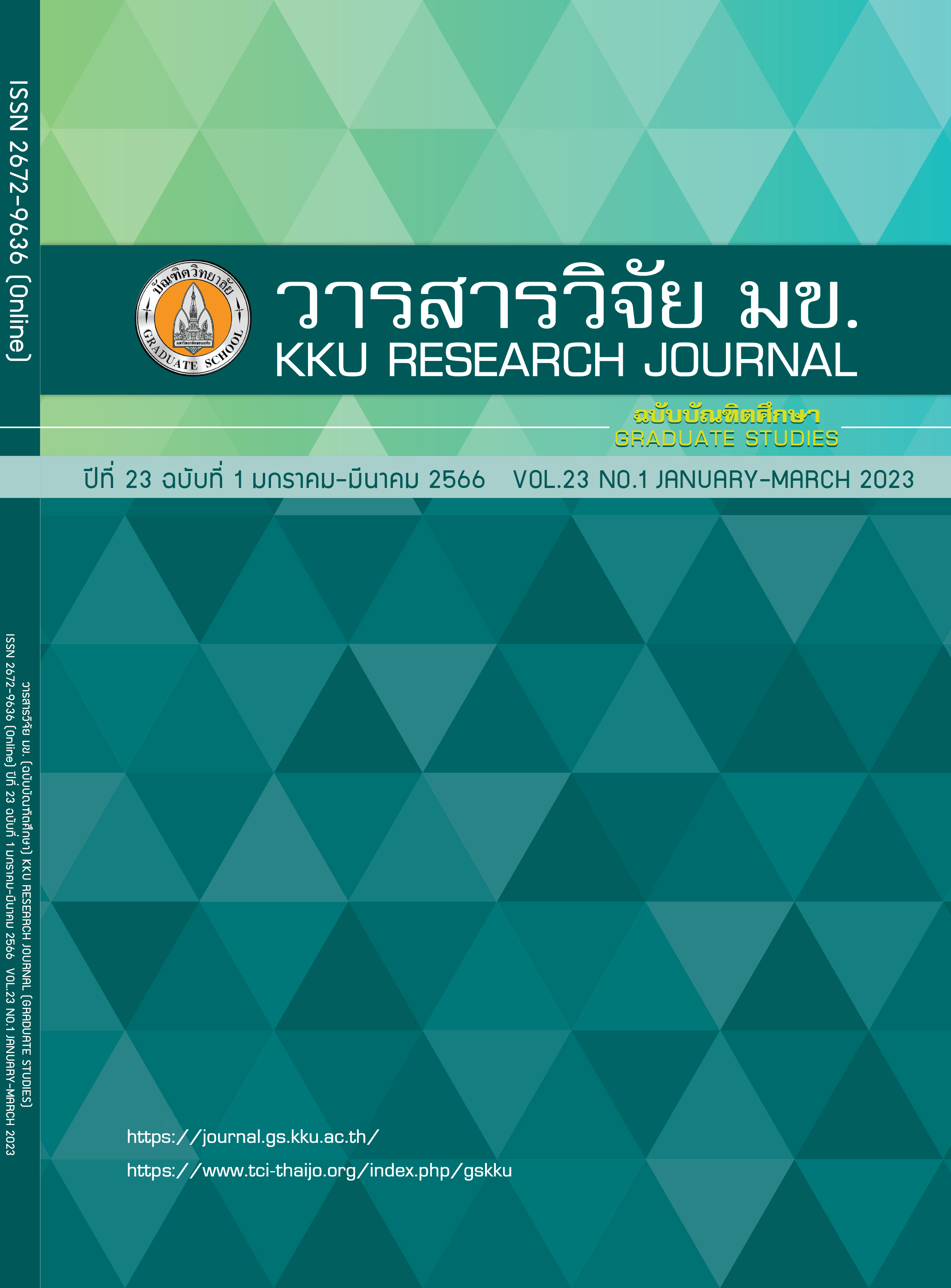Proportion and Reasons to the Accessibility of Non-urgent Adult Patients in Non-official hours at Emergency Room, District Hospital, Thailand
Keywords:
Non-urgent patients, Emergency room, Non-official hoursAbstract
The objective of this cross-sectional descriptive study was to analyze the proportion and the reasons for the accessibility of non-urgent patients in non-official hours under the context of community hospitals to use the obtained information to develop the emergency room system and patients care. The samples were 750 patients aged 18 years and over received services at the emergency room at Phon Thong Hospital, Roiet province in non-official hours. The research tool was a self-report questionnaire. The results found that 750 patients receiving services at the emergency room, 169 of them were non-urgent patients (22.5%, 95% CI 19.54 - 25.53). The most common three reasons for patients to receive the services were unconfident feeling in their self-first aid (71.3%), concern about the severity of symptoms (69.2%), and convenience of services (69.2%). The number of non-urgent patients and the reasons for receiving services were different depending on the context of each hospital. However, providing a clinic during non-official hours for non-emergency care will help reduce congestion in emergency wards and improve the quality of care for urgent patients.
References
Procedure manual for critical care. American Association of Critical Care Nurses; 2005.
W Chartbunchachai p C. Patients using emergency medical system service and patients visiting emergency room of hospitals affiliated with Office of the Permanent Secretary. rauma Cent Crit Care, Khon Kaen Hosp. 2011.
Division of medical Technical and Acedemic Affairs. Guideline for ER Service Delivery. 2nd ed. Kraysubun C, editor. Nonthaburi: Samchai; 2017.
Derlet R, Richards J, Kravitz R. Frequent overcrowding in U.S. emergency departments. Acad Emerg Med. 2001 Feb;8(2):151–155.
Miró O, Antonio MT, Jiménez S, De Dios A, Sánchez M, Borrás A, et al. Decreased health care quality associated with emergency department overcrowding. Eur J Emerg Med. 1999 Jun;6(2):105–7.
Richardson DB. Increase in patient mortality at 10 days associated with emergency department overcrowding. Med J Aust. 2006 Mar;184(5):213–216.
Derlet RW, Richards JR. Overcrowding in the nation’s emergency departments: complex causes and disturbing effects. Ann Emerg Med. 2000 Jan;35(1):63–68.
Uscher-Pines L, Pines J, Kellermann A, Gillen E, Mehrotra A. Emergency department visits for nonurgent conditions: systematic literature review. Am J Manag Care. 2013 Jan;19(1):47–59.
Amiel C, Williams B, Ramzan F, Islam S, Ladbrooke T, Majeed A, et al. Reasons for attending an urban urgent care centre with minor illness: a questionnaire study. 2012;
Read JG, Varughese S, Cameron PA. Determinants of non-urgent Emergency Department attendance among females in Qatar. Qatar Med J. 2014 Dec;2014(2):98.
Idil H, Kilic TY, Toker İ, Dura Turan K, Yesilaras M. Non-urgent adult patients in the emergency department: Causes and patient characteristics. Turkish J Emerg Med. 2018 Jun;18(2):71–74.
O’Keeffe C, Mason S, Jacques R, Nicholl J. Characterising non-urgent users of the emergency department (ED): A retrospective analysis of routine ED data. van Griensven M, editor. PLoS One. 2018 Feb;13(2):e0192855.
Unwin M, Kinsman L, Rigby S. Why are we waiting? Patients’ perspectives for accessing emergency department services with non-urgent complaints. Int Emerg Nurs. 2016 Nov;29:3–8.
Koziol-McLain J, Price DW, Weiss B, Quinn AA, Honigman B. Seeking care for nonurgent medical conditions in the emergency department: Through the eyes of the patient. J Emerg Nurs. 2000 Dec;26(6):554–563.
Sancton K, Sloss L, Berkowitz J, Strydom N, McCracken R. Low-acuity presentations to the emergency department: Reasons for and access to other health care providers before presentation. Can Fam Physician. 2018 Aug;64(8):e354–360.
Burnett MG, Grover SA. Use of the emergency department for nonurgent care during regular business hours. CMAJ. 1996 May;154(9):1345–1351.
Andrews H, Kass L. Non-urgent use of emergency departments: populations most likely to overestimate illness severity. 2018;13:893–900.
Sarunyaprait J, Kunlabut K, Trirattanapikul W, Navarittiussavin Y, Sirijun N, Lohatin W, et al. Factors Related to the Access of the Emergency Room of Srinagarind Hospital Compared to Primary Care Unit of Khon Kaen University in Non-Urgency Undergraduate Students of Khon Kaen University. Srinagarind Med J. 2560 Dec;32(6):596–602.
W W, Daniel. Biostatistics: a foundation for analysis in the health sciences. Vol. 37, Biometrical Journal. Wiley; 1995. 744–744 p.
Emergency Department Utilization In California Survey of Consumer Data and Physician Data. 2006.
Oktay C, Cete Y, Eray O, Pekdemir M, Gunerli A. Appropriateness of Emergency Department Visits in a Turkish University Hospital. Croat Med J. 2003;44(5):585–591.
Kraaijvanger N, Van Leeuwen H, Rijpsma D, Edwards M. Motives for self-referral to the emergency department: A systematic review of the literature. Vol. 16, BMC Health Services Research. BioMed Central Ltd.; 2016.
Masso M, Bezzina AJ, Siminski P, Middleton R, Eagar K. Why patients attend emergency departments for conditions potentially appropriate for primary care: Reasons given by patients and clinicians differ. Emerg Med Australas. 2007 Aug;19(4):333–340.
Gindi RM, Lindsey MPH;, Black I, Cohen RA. National Health Statistics Reports, Number 90, 2/18/16. 2013.
Carret MLV, Fassa ACG, Domingues MR. Inappropriate use of emergency services: a systematic review of prevalence and associated factors. Cad Saude Publica. 2009;25(1):7–28.
Janz NK, Becker MH. The Health Belief Model: a decade later. Heal Educ Q. 1984;11(1):1–47.
Rosenstock IM, Strecher VJ, Becker MH. Social learning theory and the Health Belief Model. Heal Educ Q. 1988;15(2):175–183.
Downloads
Published
Issue
Section
License
Copyright (c) 2023 KKU Research Journal (Graduate Studies)

This work is licensed under a Creative Commons Attribution-NonCommercial-NoDerivatives 4.0 International License.



